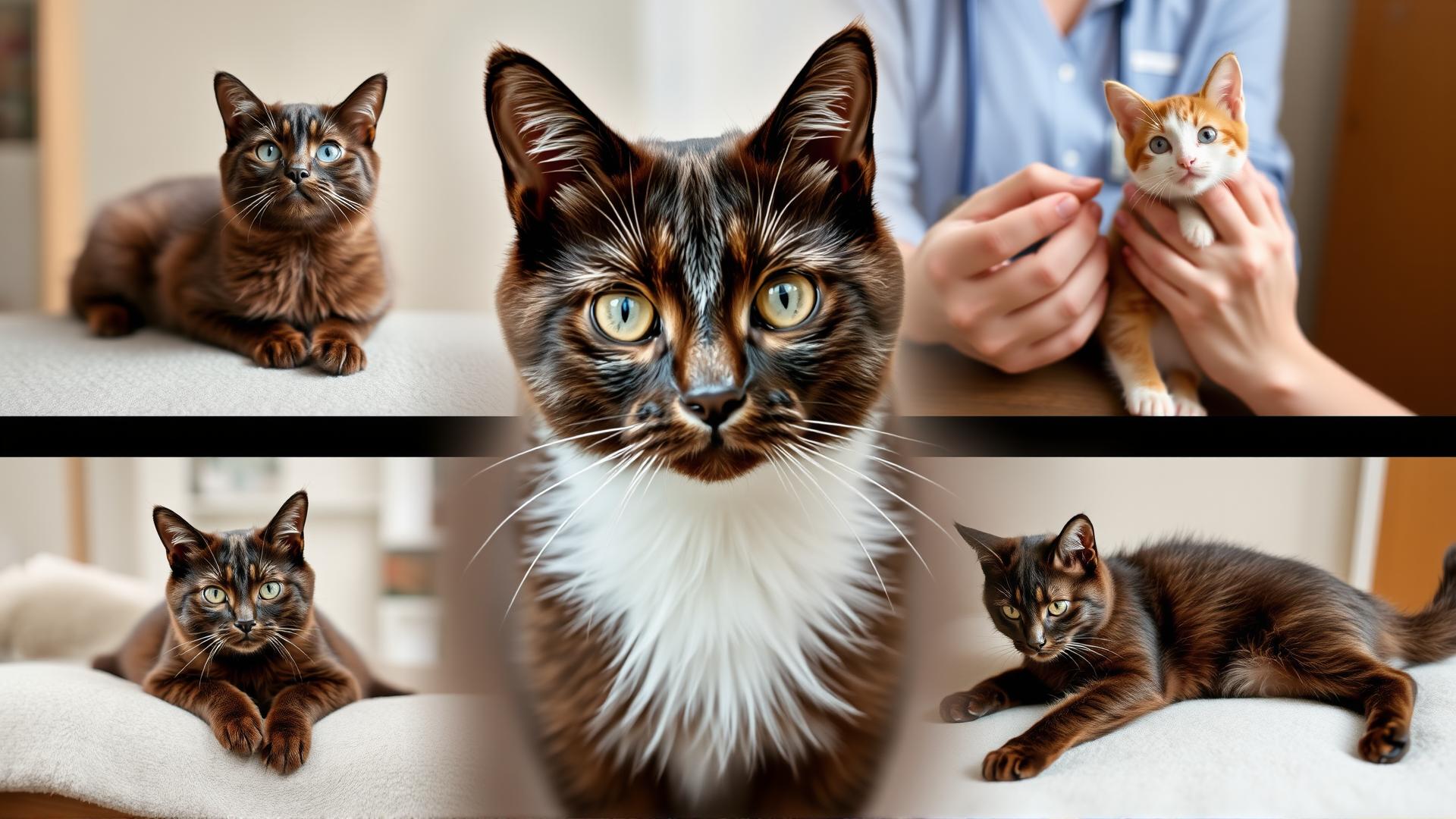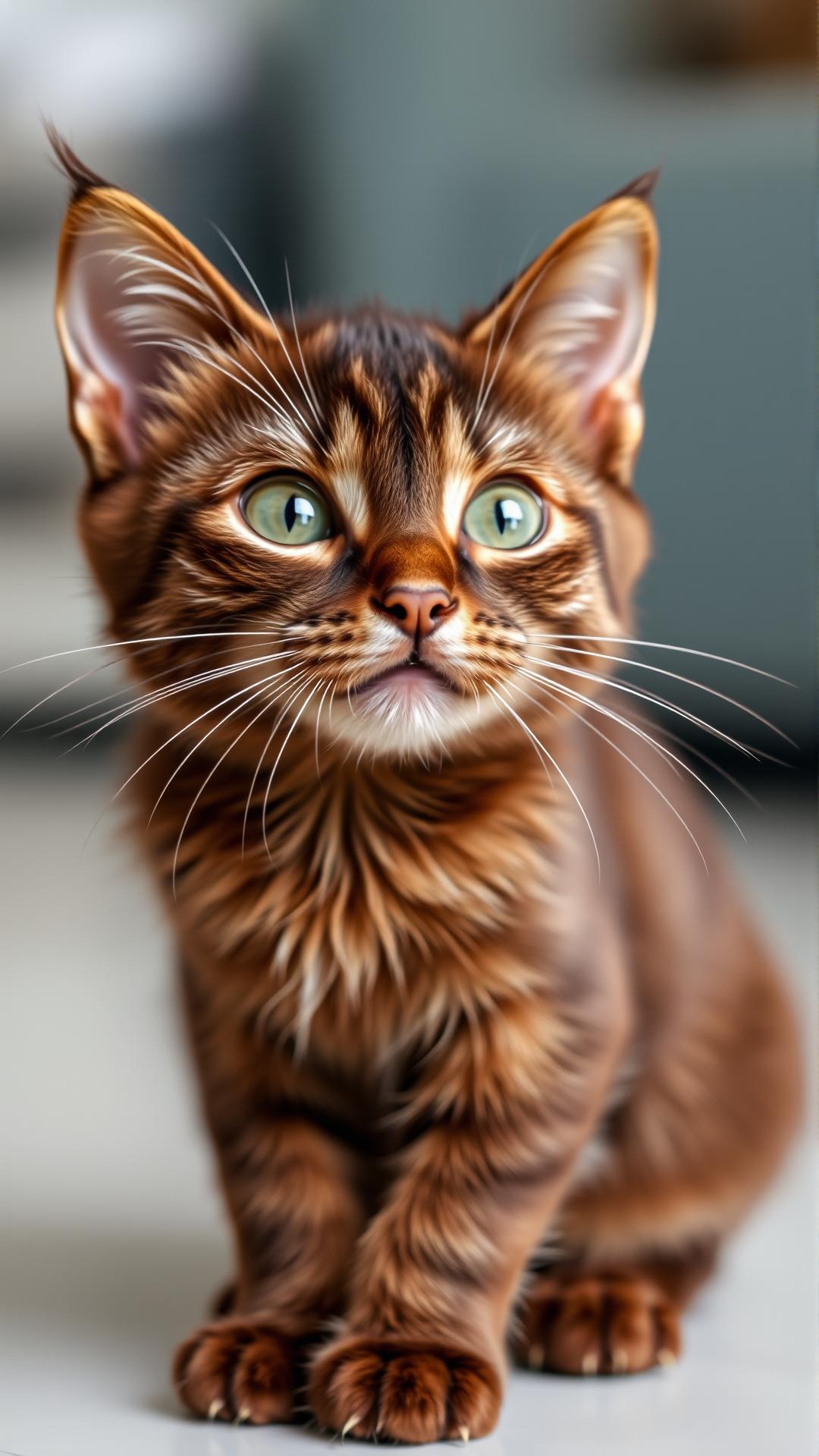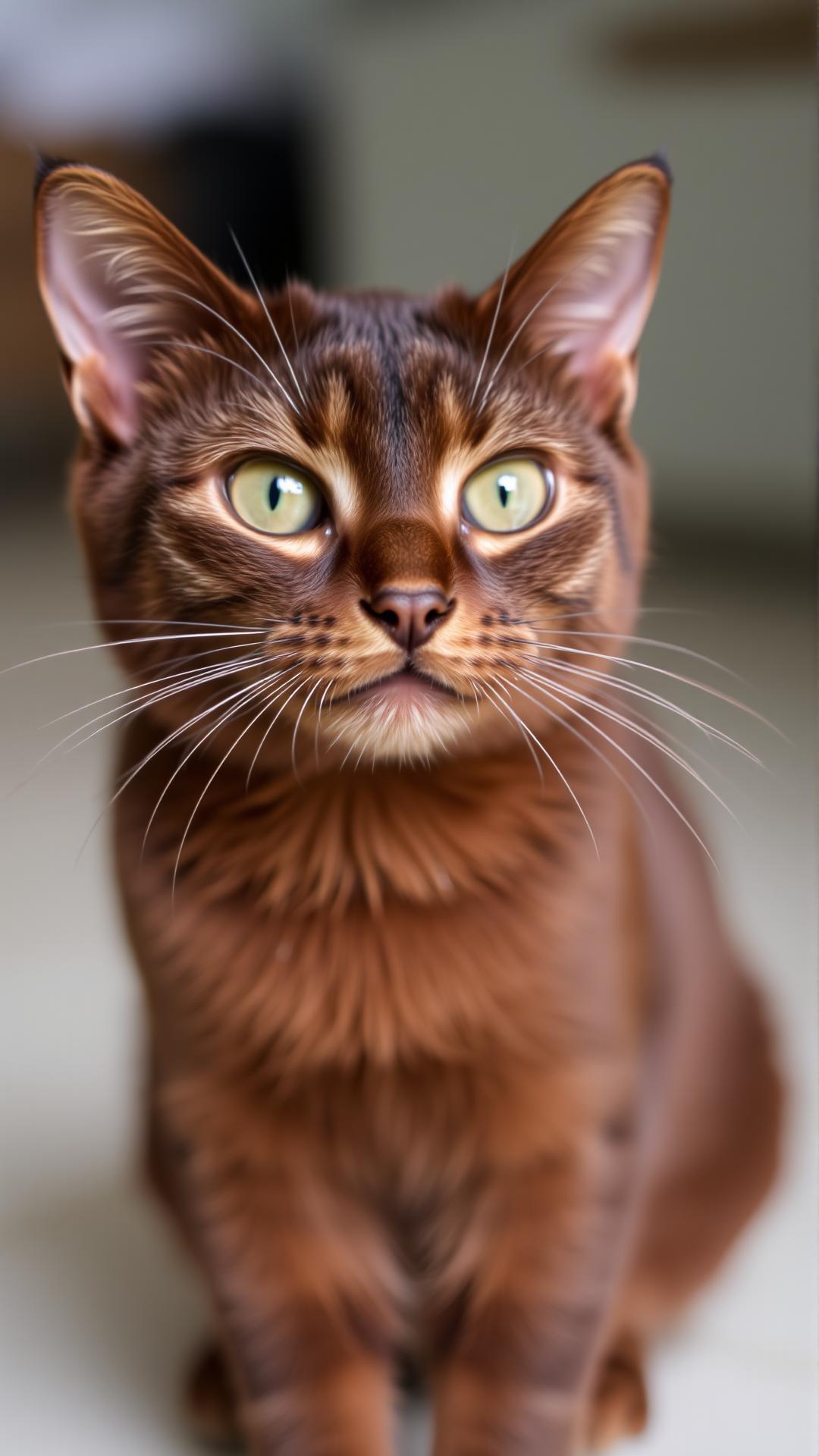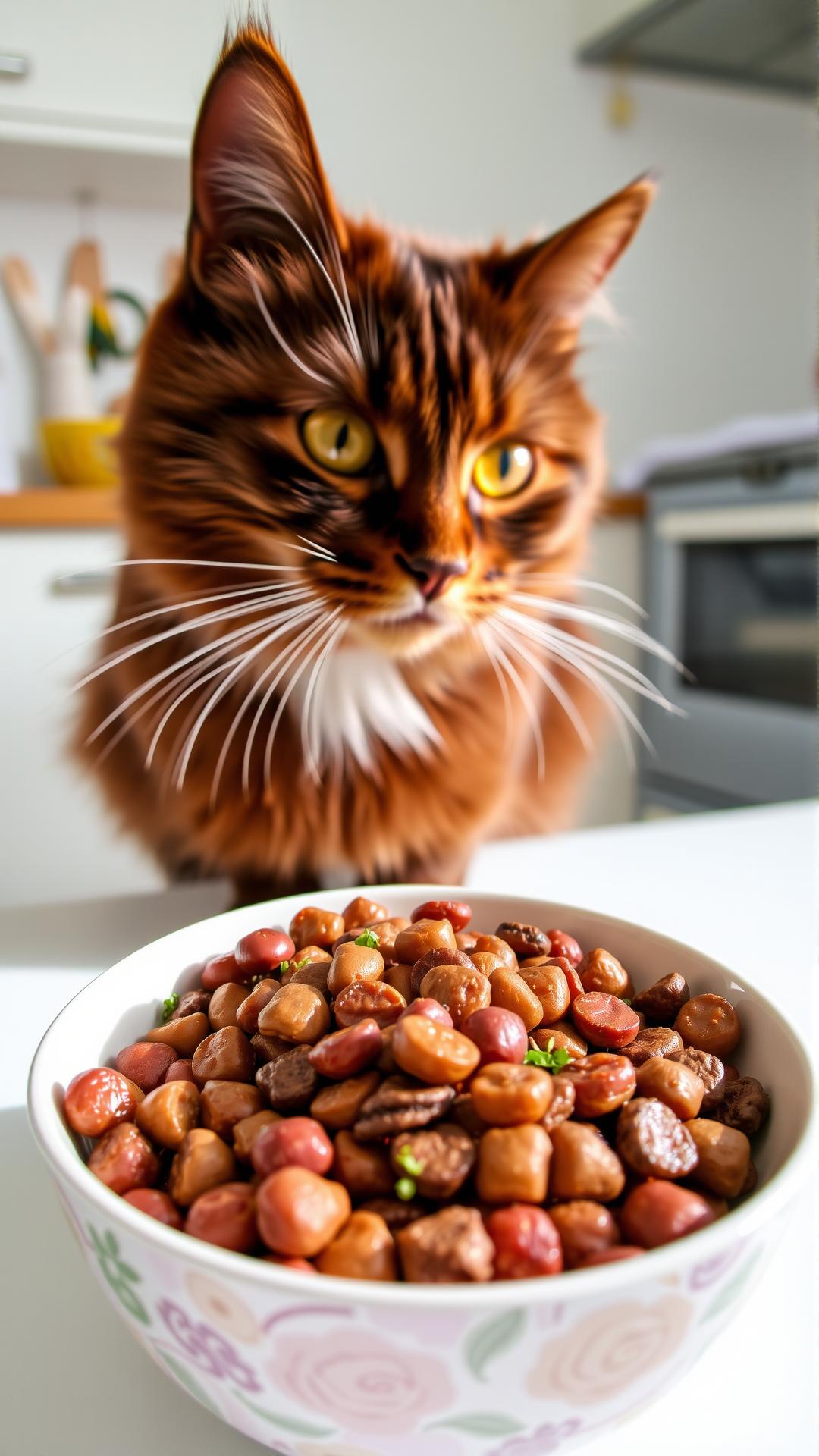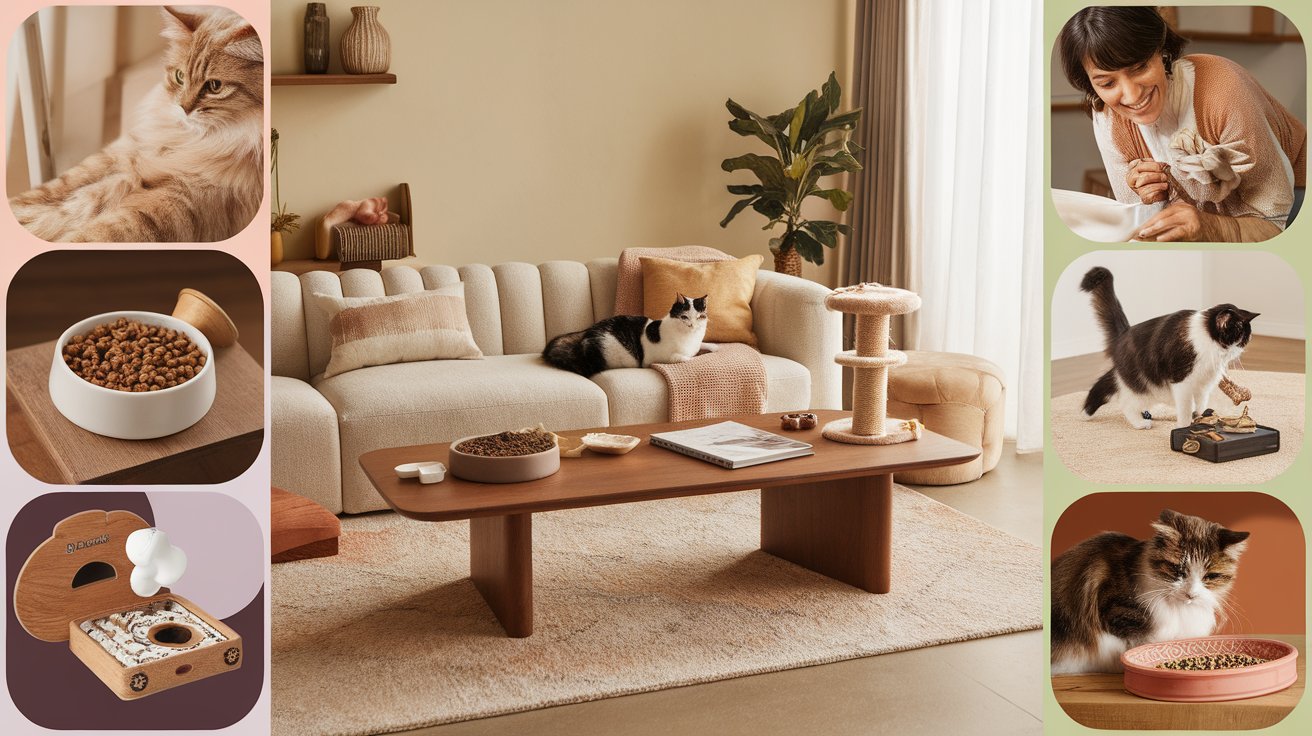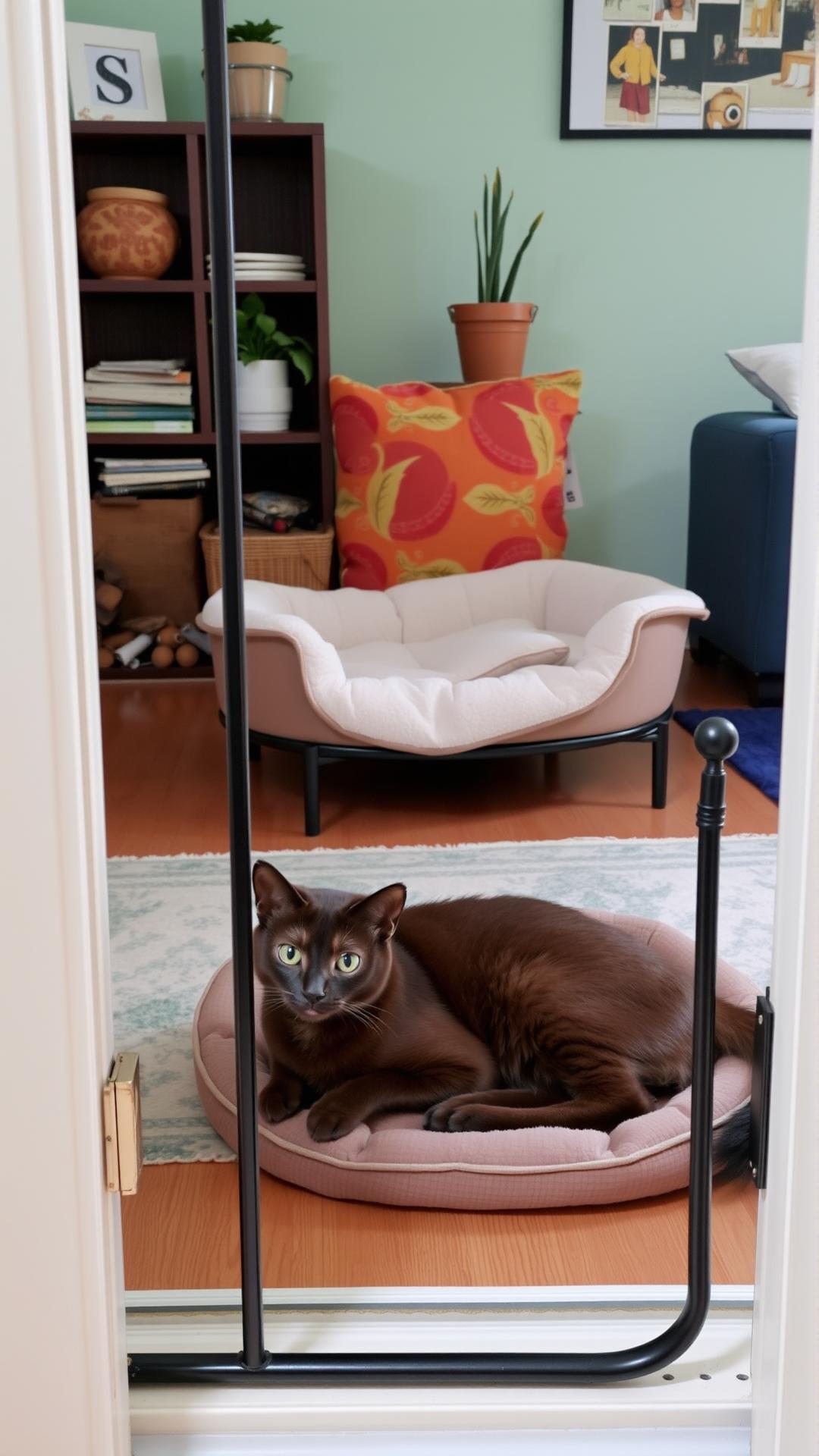Introduction
The Chocolate Cat, a stunning breed classified under the Burmese variety, is well-known for its rich, mocha-colored fur and affectionate nature. This breed has specific behavioral patterns and health needs that every owner should understand to ensure a happy and healthy feline companion. With their playful personalities and social tendencies, Chocolate Cats make fantastic pets, but they do require attentive care and understanding of their unique behavior. This article will explore how to best care for these delightful creatures, focusing on their behavior, health tips, and needs.
In this comprehensive guide, we will discuss on the fascinating world of Chocolate Cats, starting with an overview of their behavioral traits to better engage with your feline friend. We’ll also discuss essential health advice tailored specifically for this breed, ensuring that your Chocolate Cat remains vibrant and full of life. By understanding their needs and idiosyncrasies, owners will foster a stronger bond and provide an environment where their Chocolate Cat can thrive.
Introduction to the Chocolate Cat
The Chocolate Cat is a captivating variant of the Burmese breed, known for its striking appearance and charming personality. Originating from Southeast Asia, the Burmese breed itself was developed in the early 20th century, where breeding efforts aimed to create a compact and muscular feline with a playful temperament. The Chocolate color, which appears as a warm, rich brown, is a result of specific gene combinations in the breeding process, leading to the establishment of this delightful variety.
One of the defining characteristics of the Chocolate Cat, aside from its elegant color, is its mesmerizing coat. The fur is short and satin-like, giving it a luxurious texture that invites petting. Its deep amber or yellow eyes create a striking contrast against the chocolate-toned fur, further enhancing its appeal. In terms of build, Chocolate Cats are typically medium-sized with a rounded head and short, straight nose, embodying the traditional Burmese traits. The body is muscular yet slim, and their large, expressive eyes contribute to their endearing appearance.
As a member of the Burmese breed, Chocolate Cats exhibit several typical behavioral traits, such as being affectionate and social. They thrive on companionship and enjoy being part of a household dynamic. This breed often seeks out human interaction, following their owners from room to room and engaging in playful antics. Their lively nature makes them excellent companions for families and individuals alike. Because of their strong bond with humans, they may show signs of separation anxiety if left alone for extended periods.
The Chocolate Cat’s unique coloration and affectionate behavior make it a standout choice for cat lovers who appreciate not only a pretty face but also a warm and engaging personality. Understanding their origins and characteristics can help potential owners recognize the love and care these cats require. With their vibrant spirit and striking appearance, Chocolate Cats are not just pets; they become loving members of the family, enriching the lives of their owners with undeniable charm and warmth.
Understanding Chocolate Cat Behavior Explore the Typical Behaviors Exhibited by Chocolate Cats and How These Reflect Their Personality
Chocolate Cats, a unique variation of the Burmese breed, display a variety of behaviors that reflect their distinct personalities. Known for their affectionate and playful nature, these cats often engage in activities that highlight their social and interactive tendencies. One of the most endearing traits observed in Chocolate Cats is their playful demeanor; they are not just content with lounging around the house. Their playful antics make them not only entertaining to watch but also engaging companions.
Chocolate Cats are often characterized by their curiosity. This inquisitiveness leads them to explore their surroundings, ensuring that no nook or cranny goes unexamined. Whether it’s climbing to high places or burrowing into boxes, their explorative behavior is fueled by a desire to understand their environment. Owners should take note of this trait, providing safe spaces for exploration while keeping potentially hazardous items out of reach.
Being highly sociable, Chocolate Cats tend to form strong bonds with their human companions. They will often follow their owners from room to room, relishing in the presence of their favorite people. This loyalty is reflected in their tendency to seek physical affection, such as snuggling or rubbing against their owners. Such behaviors are not just a display of affection but also a way of marking their territory, which further reinforces their bond with their human family.
Vocalization is another significant aspect of their behavior. Chocolate Cats are known for being quite vocal, using a variety of sounds to express their needs and feelings. These vocalizations can range from soft trills to insistent meows, indicating their desire for attention or playtime. Recognizing the different sounds and what they signify can enhance the relationship between the owner and the cat.
In terms of health, the active and playful nature of Chocolate Cats requires regular exercise and mental stimulation. Owners should incorporate interactive playtime into their daily routine, including toys that challenge their intelligence and agility. This not only keeps the cat physically fit but also addresses their psychological needs.
Understanding the unique behaviors of Chocolate Cats is essential for any loving owner. By recognizing their affectionate nature, playfulness, and curiosity, owners can ensure their Chocolate Cats lead happy, healthy, and fulfilling lives.
Communication Signals of Chocolate Cats Understanding Their Unique Expressions
Vocalizations: The Symphony of Sounds
Chocolate Cats exhibit a diverse range of vocalizations that serve as crucial communication tools between them and their owners. These sounds can vary significantly based on their emotional states, needs, or even their individual personalities. While many cats produce a standard meow, Chocolate Cats often have unique sounds that can be quite expressive. For instance, a soft, melodious chirp might indicate contentment or curiosity. Conversely, a loud, abrupt yowl could suggest discomfort or a desire for immediate attention.
It is also crucial to pay attention to the pitch and tone of their vocalizations. A high-pitched meow may denote excitement, whereas a low growl could be a sign of displeasure or warning. Understanding these vocal cues requires a keen ear and an attentive eye for the context surrounding each sound, facilitating deeper communication with your feline companion.
Body Language: Reading the Signals
Beyond vocalizations, Chocolate Cats are masters of non-verbal communication. Their body language can provide vital insights into their mood and intentions. For example, a Chocolate Cat that displays a fully extended body while lounging is signaling relaxation and comfort in its environment. In contrast, a cat that arches its back, fluffs its fur, and stares intently may feel threatened.
The position of their tail is particularly telling. A raised tail signifies confidence and happiness, while a lowered or tucked tail often indicates fear or submission. Watch for ear movements as well; ears that swivel can indicate curiosity, while flattened ears are a sign of aggression or irritation.
Chocolate Cats may also use their whiskers to communicate. When their whiskers are pointed forward, it reflects curiosity or enthusiastic engagement with an object or person. Conversely, whiskers pulled back against the face may suggest anxiety or discomfort.
Recognizing and interpreting these various forms of communication will not only enhance your bond with your Chocolate Cat but also help you preemptively address their needs, promoting a harmonious living environment. Understanding their signals is essential for ensuring mental well-being and happiness, paving the way for a fulfilling companionship.
Health Needs of the Chocolate Cat
Common Health Issues in Chocolate Cats
Chocolate Cats, known for their rich fur color and charming personalities, are susceptible to certain health issues that owners should be aware of. One common concern is obesity, often arising from their playful nature combined with a sedentary lifestyle. Maintaining a healthy weight is crucial for the overall well-being of these felines, as excessive weight can lead to diabetes and joint problems. Regular exercise through interactive play is essential to keeping them active.
Another prevalent health issue is dental disease. Like all cats, Chocolate Cats can develop tartar buildup, leading to periodontal disease. This can cause pain and discomfort and potentially lead to more serious health issues if bacteria from the mouth enter the bloodstream. Regular dental checkups and providing dental treats can help mitigate these risks, ensuring a healthy mouth and preventing systemic health problems.
Preventive Measures for a Healthy Life
To maintain the well-being of a Chocolate Cat, it is important to schedule regular veterinary check-ups. These visits allow for early detection of any potential issues and ensure that vaccinations are up to date. Utilizing preventive health measures, such as flea and tick control, is also crucial, as these parasites can lead to more severe medical conditions.
Nutrition plays a significant role in health, and it is vital to provide a balanced diet tailored to the specific needs of Chocolate Cats. Choosing high-quality cat food that lists meat as the first ingredient and is rich in essential nutrients will help support organ function, skin health, and overall vitality. Moreover, understanding portion control and avoiding overfeeding can prevent obesity and its associated health problems.
Hydration is another key aspect of health, as many cats do not drink enough water. Encouraging fluids through wet cat food or providing cat fountains can promote hydration and support kidney health. Regularly monitoring your cat’s weight and body condition score can help in making necessary adjustments to their diet and exercise routine.
By being proactive and adopting these preventive measures, owners can ensure their Chocolate Cats live a vibrant and healthy life, filled with joy and playful antics. These steps are not just beneficial; they are essential to fostering a lasting bond between owner and pet, allowing for years of companionship and love.
Dietary Requirements for Optimal Health in Chocolate Cats
Understanding Nutritional Needs
Chocolate Cats, with their beautiful coats and affectionate nature, thrive best with a well-balanced diet tailored to their specific needs. Like all breeds, they require essential nutrients to maintain their energy levels, weight, and overall health. A premium quality cat food that lists meat as the primary ingredient is vital, as protein is integral to their muscle development and energy. Look for formulas specifically designed for cats, which ensure they receive adequate amino acids, especially taurine.
Fats are another crucial component of their diet. They provide a concentrated source of energy and contribute to healthy skin and coat. Essential fatty acids, such as Omega-3 and Omega-6, found in fish oil, are particularly beneficial for promoting a lustrous coat and reducing inflammation. A balanced ratio is vital to avoid obesity, which Chocolate Cats can be prone to due to their laid-back demeanor.
Portion Control and Feeding Practices
Understanding portion control is necessary for preventing obesity in Chocolate Cats. Owners should follow feeding guidelines provided on cat food packaging, adjusting based on the cat’s age, weight, and activity level. Typically, adult cats need about 20 calories per pound of body weight daily. Regular weigh-ins can help ensure that your Chocolate Cat maintains a healthy weight.
In addition to commercial cat food, offering fresh, high-quality treats can enrich their diet. However, these should only make up about 10% of their daily caloric intake. Treats like small amounts of cooked chicken or fish can be enjoyable and nutritious, just ensure they are free from additives and salt.
Hydration is another critical factor in dietary health. Cats are notorious for not drinking enough water. Encourage hydration by providing fresh, clean water daily and incorporating wet food into their diet, as this can increase fluid intake and contribute to kidney health. Some cats may enjoy drinking from a pet water fountain, which adds freshness and entices them to drink more.
Maintaining the health of your Chocolate Cat involves a balanced, high-quality diet focused on protein, fats, portion control, and hydration. Regular veterinary check-ups will ensure that their specific needs are met, leading to a happy and healthy life.
Maintaining Good Mental Health Strategies for Chocolate Cats
The mental well-being of Chocolate Cats is a critical aspect of their overall health and happiness. These cats possess unique behavioral traits that can impact their mental state significantly. Understanding these traits helps owners create a nurturing environment that fosters mental wellness.
Behavioral Traits Association with Mental Health
Chocolate Cats are known for their sociable and playful nature. Their affectionate demeanor often leads to a strong bond with their owners, and they thrive in environments where they receive ample attention and interaction. However, these traits can also mean that Chocolate Cats may experience anxiety or stress when left alone for extended periods. Owners must be aware that a lack of social interaction can lead to undesirable behaviors such as scratching, excessive meowing, and even aggression.
Recognizing the signs of anxiety or stress is essential. Look for behaviors such as hiding, changes in eating habits, or sudden aggression. These may serve as indicators that your Chocolate Cat is struggling emotionally. Providing mental stimulation and companionship can alleviate these feelings, ensuring a happy and balanced feline friend.
Strategies for Enhancing Mental Well-Being
Incorporating playtime into your daily routine is crucial. Engaging your Chocolate Cat with toys, puzzles, and interactive games stimulates their mind and satisfies their natural hunting instincts. Schedule multiple short play sessions throughout the day, ensuring that your cat has opportunities to exercise both physically and mentally.
Creating a stimulating environment is also beneficial. Consider setting up play areas with climbing structures, scratching posts, and cozy resting spots. Rotate toys regularly to keep their interest piqued. You can even create a cat aesthetic by incorporating elements that appeal to your Chocolate Cat’s playful nature.
Socialization with other pets can be advantageous as long as it’s done carefully. Gradually introducing new companions helps to foster a harmonious environment where your Chocolate Cat can thrive. However, be cautious and observe interactions closely; not all pets will mesh well together.
Incorporating a routine can also have a calming effect on Chocolate Cats. Regular feeding, playtime, and quiet hours can create a sense of stability that contributes to their mental health. Pay attention to their individual needs and preferences to strike the right balance, promoting a happy, healthy, and mentally sound Chocolate Cat.
Creating a Safe Environment for Your Chocolate Cat
Your Chocolate Cat’s Home: A Tailored Sanctuary
Creating an optimal living space for your Chocolate Cat goes beyond standard pet care; it involves understanding their specific needs and behaviors. Chocolate Cats, often referred to as Burmese, possess unique traits, including sociability and exuberance. Their safety and comfort should be your primary focus when preparing your home.
First and foremost, examine your living environment for any potential hazards. Chocolate Cats are inherently curious and active, which means they may explore areas that could be dangerous. Ensure that electrical cords are secured, and breakables are placed out of reach. It’s advisable to use childproof latches on cabinets where cleaning supplies or toxic plants might be stored.
Establish safe zones within your home. Chocolate Cats thrive in spaces where they can retreat when they feel overwhelmed or need solitude. Create cozy spots with soft bedding, and consider placing them in various locations throughout the house. A sunny windowsill or a quiet corner can be ideal, offering both warmth and a survey of their territory.
Include enriching toys and climbing structures in your home setup. Chocolate Cats require mental and physical stimulation to prevent boredom. Interactive toys that challenge their intellect will enhance their mental well-being while keeping them entertained. Cat trees or shelves offer great opportunities for climbing which aligns with their natural instincts.
Consider the layout of your furniture as well; providing clear pathways is essential for your cat’s comfort and security. Avoid clutter and obstacles that could obstruct their movement, allowing them to roam freely. This setup not only caters to their playful nature but also reduces stress by giving them the freedom to explore without hesitation.
Nutrition: A Cornerstone of Safety
Another aspect of creating a safe environment for your Chocolate Cat is ensuring they have access to healthy food and fresh water. Select high-quality cat food that meets their nutritional requirements and avoid the temptation of chocolate or other harmful treats that may seem appealing. Regular feeding schedules contribute to their overall health and stability.
Providing a litter box in a secure area encourages proper bathroom habits. Keep it clean and easily accessible, while ensuring it’s placed away from their eating area to promote hygiene. By following these guidelines, you can create a nurturing and safe environment conducive to the health and happiness of your beloved Chocolate Cat.
Conclusions
Owning a Chocolate Cat can be a deeply rewarding experience filled with love and companionship. Their unique behaviors, such as their playful nature and affectionate interactions, are just some of the reasons why they have gained popularity among cat enthusiasts. However, it is crucial to recognize their specific health needs to ensure their longevity and quality of life. Regular veterinary check-ups, balanced nutrition, and attention to behavioral signals are essential aspects of their care.
By following the health tips outlined in this article and being attuned to your Chocolate Cat’s behavior, owners can create a nurturing environment that promotes happiness and well-being. Ultimately, a deep understanding of this beautiful breed will lead to a fulfilling relationship, filled with those heartwarming moments that only a Chocolate Cat can provide.

